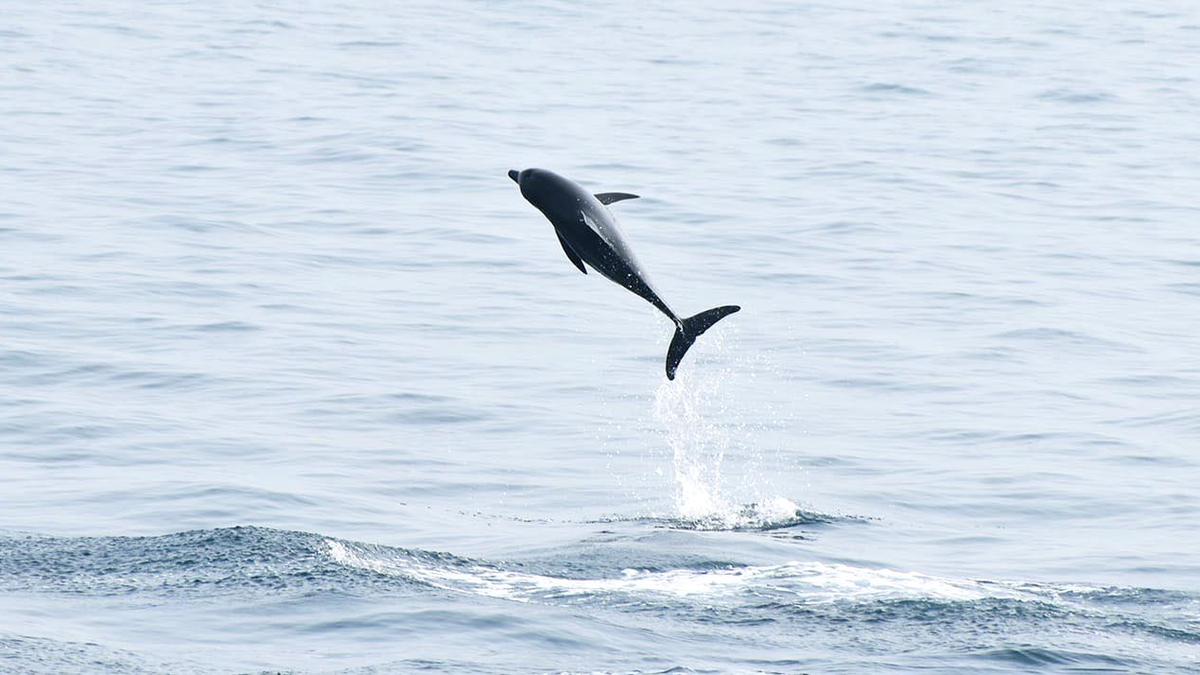Survey Confirms 6,327 River Dolphins in India’s Major River Basins
India’s first-ever comprehensive river dolphin population survey has recorded 6,327 dolphins across the Ganga, Brahmaputra, and Beas river basins. Conducted between 2021 and 2023, this extensive survey covered 8,406 km of river stretches and a 101 km segment of the Beas River. The study, led by the Wildlife Institute of India (WII) in collaboration with state forest departments and leading conservation organizations, provides critical insights into the distribution and conservation status of these endangered aquatic mammals.
Gangetic Dolphins Dominate India’s River Systems
The survey found that India is home to 6,324 Gangetic river dolphins spread across the Ganga and Brahmaputra basins. Additionally, three Indus river dolphins were documented in the Beas River basin in Punjab. The results underscore the significance of India’s freshwater ecosystems in sustaining these rare and endangered species.
The Gangetic dolphin (Platanista gangetica) is classified as endangered by the International Union for Conservation of Nature (IUCN) and is recognized as India’s national aquatic animal. The species plays a crucial role in maintaining the health of river ecosystems and serves as an indicator of freshwater biodiversity.
Survey Methodology: Mapping India’s River Dolphins
The population survey involved a collaborative effort by the Wildlife Institute of India (WII), state forest departments of Punjab, Uttar Pradesh, Bihar, Assam, Jharkhand, Rajasthan, and non-profit organizations such as Aaranyak, World Wildlife Fund (WWF), Turtle Survival Alliance, and Wildlife Trust of India. The researchers deployed a combination of visual counts, acoustic monitoring, and advanced GPS-based tracking techniques to ensure accurate results.
Key aspects of the survey methodology included:
Extensive Coverage: Over 8,406 km of river stretches across Ganga and Brahmaputra basins and a 101 km segment of the Beas River were surveyed.
Species Identification: Researchers distinguished between Gangetic dolphins and Indus river dolphins based on distinct morphological and behavioral traits.
Technological Integration: The survey employed hydrophones and GPS-based monitoring to track dolphin movement and population density.
Challenges in Dolphin Conservation
Despite the encouraging population count, river dolphins in India face several threats, including:
Pollution and Habitat Degradation: Industrial waste, plastic pollution, and untreated sewage discharge have severely affected river water quality, impacting dolphin survival.
Dams and Water Diversions: The construction of large dams and barrages has fragmented river habitats, restricting dolphin movement and breeding patterns.
Illegal Fishing Practices: The use of gillnets and mechanized fishing poses a direct threat to dolphins, often leading to accidental entanglements and fatalities.
Climate Change: Variations in water levels due to climate change have altered river ecosystems, affecting prey availability and habitat conditions.
Government and Conservation Efforts
Recognizing the importance of protecting river dolphins, the Indian government has initiated several conservation measures:
Project Dolphin: Launched under the Ministry of Environment, Forest and Climate Change (MoEFCC), this initiative aims to protect and revive dolphin populations through habitat conservation, awareness programs, and scientific research.
Protected Areas and Sanctuaries: The Vikramshila Gangetic Dolphin Sanctuary in Bihar serves as a key conservation zone for the species.
Community Involvement: Fishermen and local communities are being engaged in conservation efforts to minimize threats like fishing net entanglements.
Strict Anti-Pollution Regulations: Efforts are being made to curb river pollution through stringent waste management policies and ecological restoration programs.
The Road Ahead: Ensuring Long-Term Dolphin Conservation
The findings from this landmark survey provide a baseline for future conservation policies and scientific studies. Moving forward, sustained efforts are required to ensure that India’s river dolphins continue to thrive:
Strengthening conservation policies through enhanced legal frameworks and protection measures.
Expanding research and monitoring programs using advanced technology like drones and AI-based tracking systems.
Increasing community awareness and participation to foster responsible river use and conservation ethics.
Restoring river ecosystems by improving water quality, reducing industrial pollution, and ensuring sustainable water management.






